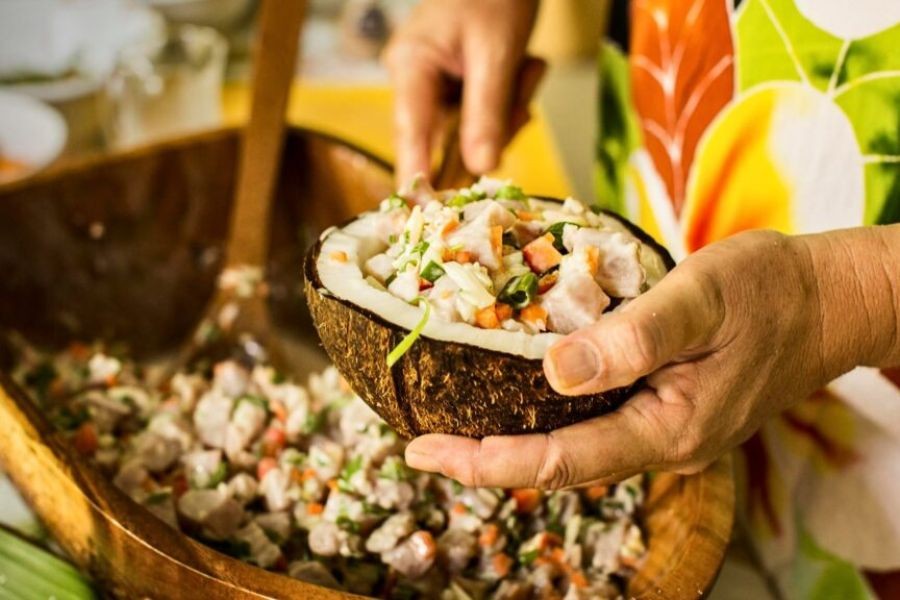With New Zealand's rich cultural tapestry, the vibrant and unique culinary traditions of the Māori people offer a tantalizing exploration into the nation's heritage. As traditional Māori foods gain popularity, they not only enrich the gastronomic landscape but also have significant implications for the local economy, tourism, and cultural preservation. This deep dive will uncover the top ten traditional Māori foods you must try, offering insights into their economic impact and cultural significance.
Unveiling the culinary Treasures of Māori Culture
Did you know that traditional Māori foods are increasingly being recognized for their potential to boost New Zealand’s tourism and local agricultural sectors? The integration of indigenous foods into mainstream cuisine presents an opportunity for economic growth, particularly as global interest in authentic and sustainable food experiences rises. According to the Ministry of Business, Innovation and Employment (MBIE), cultural tourism is becoming a significant factor in New Zealand's economy, with potential growth in agritourism and food tourism sectors.
1. Hāngī: The Earth-Cooked Feast
The hāngī is a traditional Māori method of cooking food using heated rocks buried in a pit oven. This communal cooking practice not only results in deliciously tender meals but also offers a unique cultural experience for locals and tourists alike.
Economic Insight: The resurgence of hāngī in cultural events and tourism packages highlights its economic potential. Incorporating hāngī into hospitality offerings can attract tourists seeking authentic experiences, thereby boosting local economies.
2. Kūmara: The Sweet Potato of Aotearoa
Kūmara has been a staple in the Māori diet for centuries. This sweet potato variety is celebrated for its versatility and nutritional benefits.
Economic Insight: As demand for locally-sourced and sustainable produce grows, kūmara farming presents opportunities for agricultural development. Stats NZ reports an increase in kūmara production, aligning with consumer trends favoring plant-based diets.
3. Pāua: The Ocean's Gem
Pāua, or abalone, is a prized shellfish in Māori cuisine, known for its distinctive flavor and vibrant shell. Māori communities have traditionally harvested pāua, underscoring their connection to the sea.
Economic Insight: The pāua industry contributes significantly to New Zealand’s seafood exports. According to the Ministry for Primary Industries (MPI), sustainable harvesting practices are crucial for maintaining this valuable resource, ensuring long-term economic benefits.
4. Kina: The Spiky Delicacy
Kina, or sea urchin, is a delicacy harvested from New Zealand's coastal waters. Its creamy roe is considered a culinary delight, often consumed raw.
Economic Insight: The kina industry supports local fisheries and provides employment opportunities, particularly in coastal Māori communities. Sustainable management of kina populations is vital for economic sustainability.
5. Rewena Bread: The Māori Sour Bread
Rewena bread, a traditional sourdough, is made using a potato starter. This bread is a cultural staple, enjoyed for its distinct taste and texture.
Cultural Insight: Rewena bread not only represents a culinary tradition but also serves as a symbol of resilience and adaptation, with Māori communities preserving these recipes through generations.
6. Tītī: The Muttonbird
Tītī, or muttonbird, is a traditional Māori food sourced from the islands around Stewart Island. Harvested sustainably, it is a vital part of Māori culture and cuisine.
Economic Insight: The tītī harvest is an example of customary rights being integrated into modern economic frameworks. The Department of Conservation (DOC) supports sustainable practices that balance cultural heritage and economic opportunity.
7. Puha: The Wild Green
Puha is a leafy green vegetable traditionally foraged by the Māori. It is often used in stews and soups, valued for its nutritional properties.
Economic Insight: With the rise of foraged and wild foods in gastronomy, puha represents an untapped market. Encouraging its use in contemporary cuisine can drive demand and support local foraging initiatives.
8. Horopito: The Native Pepper
Horopito, known as the bush pepper, is a native plant with a spicy kick. It is used to season dishes, adding a unique flavor profile.
Economic Insight: Horopito’s growing popularity in gourmet cooking underscores its potential for export. By developing this native spice into a commercial product, New Zealand could capture a niche market globally.
9. Kawakawa: The Healing Herb
Kawakawa leaves are used in traditional Māori medicine and cuisine, known for their aromatic and medicinal properties.
Cultural Insight: Kawakawa represents the intersection of food and traditional medicine, highlighting the potential for Māori knowledge systems to contribute to wellness and health industries.
10. Māori Potatoes: The Heritage Crop
Māori potatoes, with their distinct colors and flavors, are heirloom varieties that have been cultivated for generations.
Economic Insight: The heritage crop movement, which includes Māori potatoes, promotes biodiversity and food security. Supporting these initiatives can enhance New Zealand’s agricultural diversity and resilience.
Case Study: Revitalizing Māori Cuisine for Economic Growth
In recent years, New Zealand has witnessed a resurgence in the interest and consumption of traditional Māori foods. A notable example is the collaboration between Māori communities and local businesses to promote indigenous foods at events like the Wellington on a Plate festival. These initiatives have not only increased visibility for Māori cuisine but also driven economic benefits through tourism and local produce sales.
Problem: Māori communities faced challenges in preserving and promoting their culinary traditions amid globalization and market pressures.
Action: Through strategic partnerships with culinary festivals and local chefs, Māori foods were showcased as part of New Zealand’s unique cultural identity.
Result: This collaboration resulted in a 30% increase in festival attendance and a significant boost in sales of indigenous products. Furthermore, it sparked interest in cultural tourism, contributing to local economies.
Takeaway: Embracing cultural heritage through food can drive economic growth and preserve cultural identity. New Zealand businesses can leverage traditional Māori foods to enhance their offerings and appeal to a broader audience.
Debunking Common Myths About Māori Foods
- Myth: Māori foods are not suitable for modern palates. Reality: The fusion of traditional Māori ingredients with contemporary culinary techniques has resulted in dishes that are both appealing and innovative.
- Myth: Traditional Māori foods are difficult to source. Reality: Many Māori foods are becoming more accessible through local markets and specialty stores, thanks to increased interest and cultivation efforts.
- Myth: Māori cuisine lacks diversity. Reality: The wide variety of ingredients and cooking methods in Māori cuisine offers a diverse range of flavors and textures.
Conclusion
Exploring traditional Māori foods offers more than just a culinary adventure; it provides a window into New Zealand’s rich cultural heritage and economic potential. By integrating these unique ingredients into the broader food industry, New Zealand can enhance its global culinary reputation while supporting local communities and sustainable practices.
As the world becomes more interconnected, the appreciation for authentic, sustainable, and culturally significant foods will only grow. New Zealand stands at the forefront of this movement, with Māori cuisine offering a unique blend of tradition and innovation.
What traditional Māori food are you most excited to try? Share your thoughts and experiences below!
People Also Ask
- How does Māori cuisine impact New Zealand's economy? Māori cuisine boosts New Zealand's economy by enhancing cultural tourism and supporting local agriculture, contributing significantly to economic growth.
- What are the biggest misconceptions about Māori foods? One common myth is that Māori foods are inaccessible, but they are increasingly available through local markets and culinary events.
- What are the best strategies for integrating Māori foods into mainstream cuisine? Collaborating with local chefs and festivals, and promoting sustainable farming practices, are effective strategies for integrating Māori foods.
Related Search Queries
- Traditional Māori food and culture
- Māori cuisine in New Zealand
- Sustainable Māori farming practices
- Indigenous food tourism in New Zealand
- Māori food festivals and events
Embrace the rich tapestry of Māori cuisine and discover its potential to transform not only the culinary landscape but also contribute to New Zealand’s economic and cultural prosperity.






























